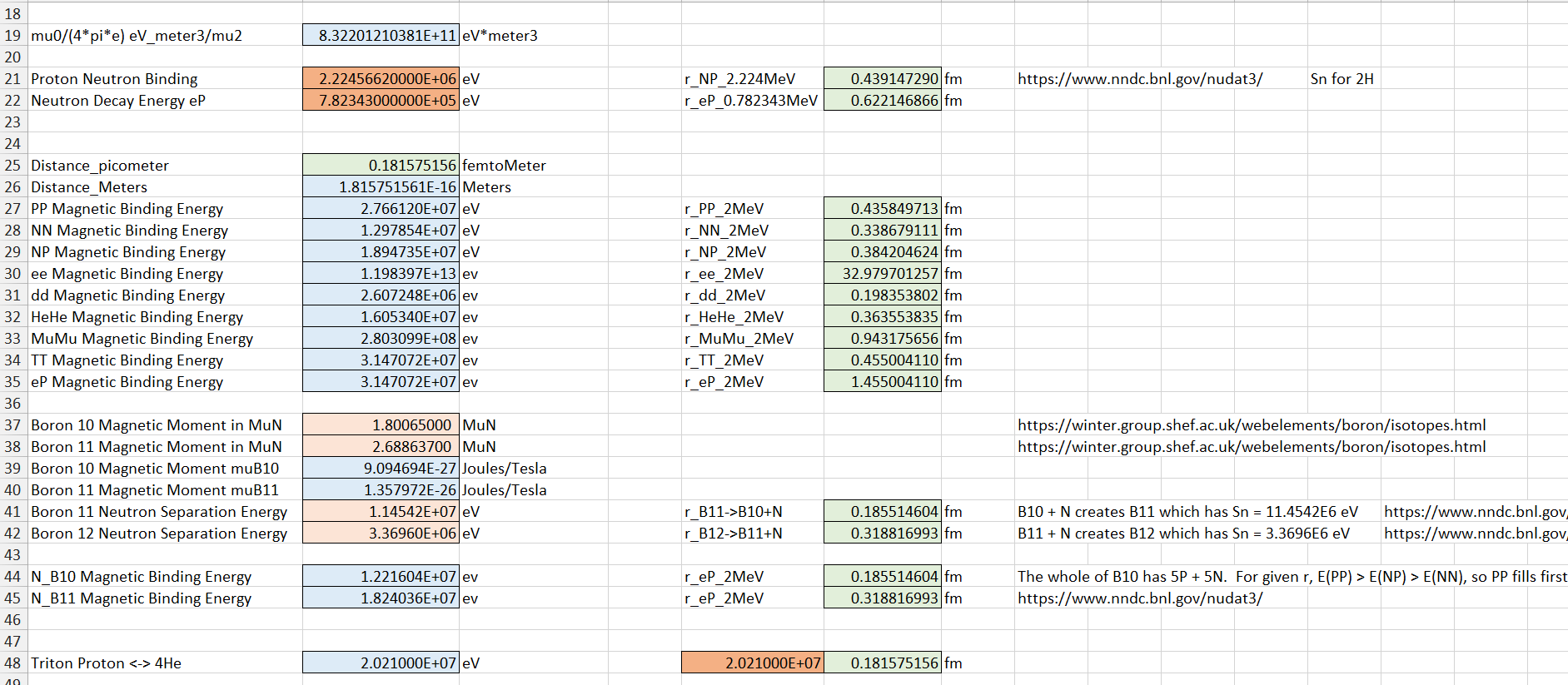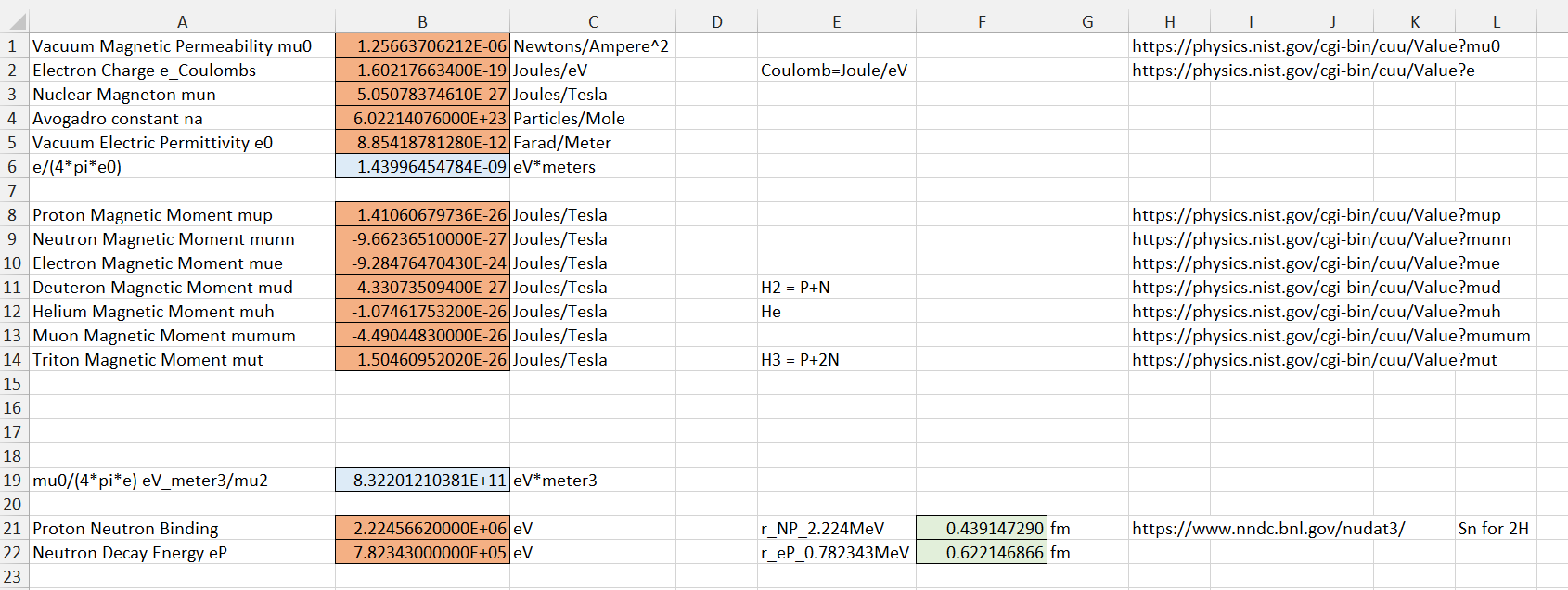Some early results from magnetic dipole energies at NUDAT3, E(PP) > E(NP) > E(NN)
Donnie Mason,
I an encouraged that some of the reactions are making sense and I am getting decent structures and reaction predictions. I hope you can add nuclear magnetic moments. I just posted a note online with a summary of some of it. That is at
NN pairs can have large stable configurations without free protons. And PP pairs can have large stable configuration without neutrons. I am working out the conditions for z >> n (number of protons much larger then number of neutrons). [ It likely only happens inside neutron stars and heavier more dense stars (I think the black holes are simply dense, and not singularities) and some large “black holes” contain unconsolidated, independently orbiting black holes and neutron stars. The region is trapping light, but not singular. ]
I am working out the conditions for atomic particle chains and molecules. A ring of P-N-P-N-P-N can be closed and bound magnetically. Likewise N-N-N-N-N-N. I picked a ring of 6 because I studied heterocyles so looking for stable configurations where electron pair binding is important. Or proton pair binding, or neutron pair binding. infinitely long chains should be possible, or sheets or buckyballs or any “chemical structures” but with NN, NP, PP bonding.

These are the Codata values I am using. For the Internet as a whole, it is critical to have core data that is stable, accessible, verifiable, and traceable. When any changes are made that has to have a mechanism for global updates without requiring every group to update manually.
